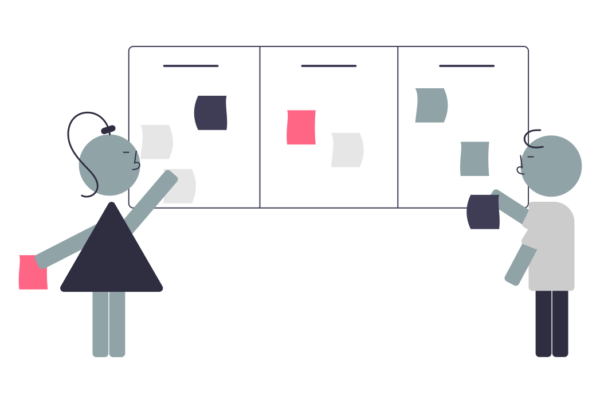Planning an effective train-the-trainer can be quite an eye-opening task 👀, especially if it is with content that you are intimately familiar with 🧠, and even more so if you’ve never done it before. Training someone to perform a task and training someone to train others to perform the same task are indeed similar, but it’s best you don’t make the mistake of assuming they are the same thing. In this post, we’ll break down the basic outline of what should be included in your train-the-trainer session and unpack a few tips and tricks along the way. 📋✨
The most effective approach to train-the-trainer sessions is modeled after the “I do, we do, you do” approach. It’s a bit more robust, but keeping that framework in mind will be helpful. It’s worth noting that trainers should walk out of train-the-trainer sessions more prepared to perform the role or task they are training than their trainees will likely walk away from the training session. The good news is that it doesn’t always have to be performed radically better, just better. It is similar to if you’re tutoring your kids on common core math but never learned that style in school, so you read a few chapters ahead. The reality is that as corporate trainers, we will be tasked to train ourselves on things we have never done before on tight deadlines. ⏰📚
So here’s the rundown of the different phases of the train-the-trainer that you should include in your train-the-trainer plan:
🔍 Plan for them to meet with stakeholders:
- This is a critical step to help them understand why this training is so important to the business, what content they should use, and how it is being measured. They will likely glean more about the program from these meetings, but these basics should kickstart the conversation. 💬
- Tip: If they can meet with the leadership sponsor, have them do it. The sponsor will have a very clear picture of the outcomes they are looking for and will be more than happy to share them. 👥
👥 Plan for them to job shadow:
- Whatever job or task you are going to be training your trainer on, have them spend some time shadowing someone performing it. This will not only give them a perfect sense of how the job or role is performed, but it will also help them gain buy-in from the team they are training. The process of shadowing tenured folks helps turn those same folks into advocates for the trainer and the training program. After all, the assumption is that you will be teaching it their way, and it’s safe to assume that their way is the right way. Or at least that will be their perspective. 👀
- Tip: Use this as an opportunity to build a relationship. Ask this person for their tips and tricks. Take an active interest in any advice they have. 🤝💡
📚 Plan for them to take the training:
- After observing the job or role, have your trainer complete the training with a tenured trainer delivering the course. This crucial step has a similar impact to the job shadow but is ultimately more useful to them because they are shadowing their actual role. It will also prepare them for the next step. 🚀
💼 Plan for them to perform the role:
- Have the trainer spend some time performing the role. This real-life experience will give them the perspective they need to drive home the learning objectives. It will also give them the experience they need to create stories and analogies that can be leveraged during the training to drive engagement with the content. 🎤
- Tip: Sometimes, you may not have the resources to perform the role, especially if it’s soft skills training versus hands-on. Encourage your trainer to try to find opportunities to practice, even if it’s in your personal life. A simulation with a colleague might be another viable option. 👥
🎯 Plan for them to practice:
- Now that you have the content, you’ve been through the training, and you’ve performed the role, it’s time to practice. There are a lot of best practices for practicing your content delivery that can be found here, but it is important that you don’t skip this crucial step so you don’t look silly in front of your peers in the next phase. 📝
- Tip: Seriously, check out this other blog post if you haven’t already. 📖
🎤 Plan their demo sessions:
- Demo sessions with feedback! That’s right, call your peers, call your managers, call their managers, it’s time to present some modules and get some feedback. Maybe even more uncomfortable than practicing alone, but all trainers need to get used to it. If you want to be an exceptional trainer, you’ll need to get comfortable making mistakes in front of an audience no matter who they are. 👥📊
- Tip: Usually, the third time trainers run through content live, regardless of the audience, they really start to nail it. So try to get at least two demo rounds in, especially if you can’t co-facilitate because there are no trainers for a particular program. 🔄
👥 Plan their co-facilitation:
- Lastly, co-facilitate two times. You take half, while your trainer takes half the first time. The second time, swap halves so that you both have covered all material at least once. This will provide your trainer with a safety net and a safe environment to develop in case spaghetti hits the fan. 🍝
- Tip: Make sure to provide plenty of feedback at this stage as well. 🗣️
If you’ve made it this far, you did it! You planned the work and worked the plan. After all of that, they’re ready to be kicked out of the nest. It’s time for them to fly on their own. 🐦 You’ve started by having them learn about the program from stakeholders and subject matter experts. You’ve had them learn the craft by shadowing, completing the training, and performing the job. You’ve helped them master their delivery through practice, practice, practice, and co-facilitation. Congratulations, you led them through the plan, and now they are ready to rock! 🎸
Here’s the head-scratcher, though:🤔 what if you don’t have the luxury of all these steps?
“But Jordon, we don’t have the time for all of this!” ⏳
“But Jordon, we don’t have the resources!” 💸
“But Jordon, we don’t have anyone for them to shadow because it’s a new function!” 🤷♂️
The process outlined above is an ideal scenario. Something that you and your team should be working towards if you currently don’t have all of the appropriate players or resources. Will you ever get there? Who knows 🤷, but it doesn’t hurt to work towards that goal 🎯. Do what you can and try to be creative to fill any gaps. As trainers, we need to be adaptable 🌈, think on our feet 🚀, and get the job done ✅. And hey, if you ever need any advice, ping me 💬, I’ll be happy to share my thoughts!
Now get out there and turn on some light bulbs 💡.




